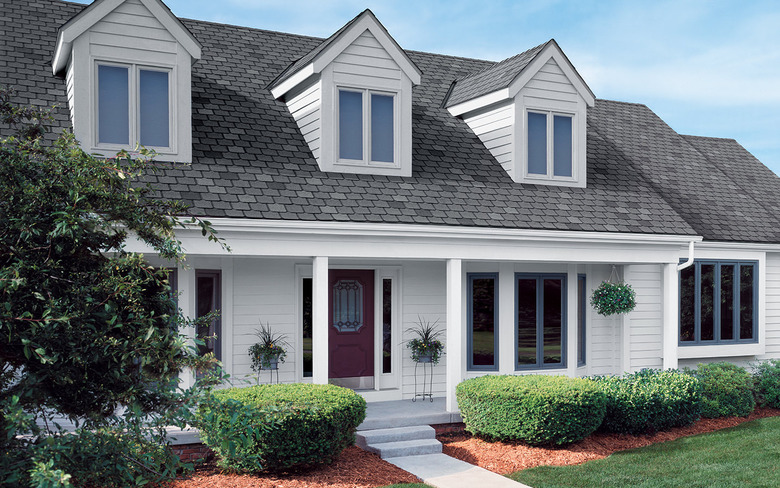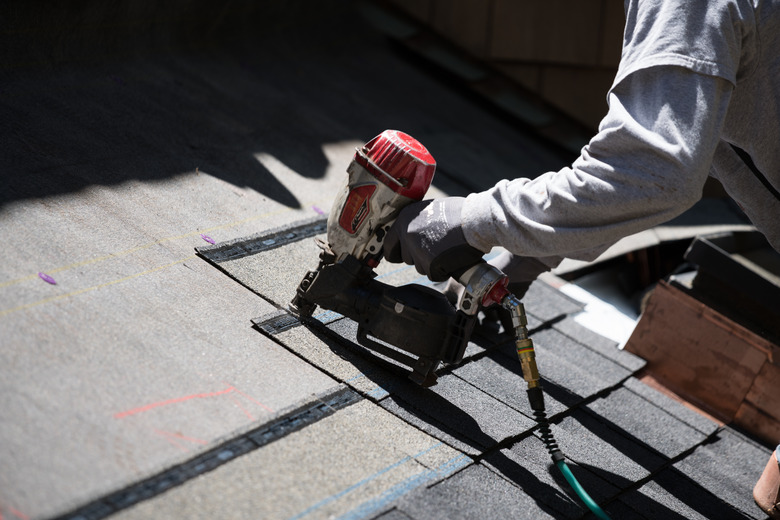What You Need To Know About Fiberglass/Asphalt Roof Shingles
Asphalt shingles are used on more residential roofs than any other roofing product—some sources say the shingles are on more than 70 percent of houses in the U.S.. And it is easy to see why. They come in a variety of styles and colors, so they can fit with the design of any house; they are easy to install; and, compared with other roofing products, they are relatively inexpensive.
Sorting Out the Terms
Sorting Out the Terms
You may have heard the terms organic asphalt shingles and inorganic, or fiberglass, asphalt shingles. These terms refer to two different ways in which the shingle base can be constructed. Organic shingles have a base made of a paper product, such as cardboard or cellulose. Inorganic shingles have a base made of fiberglass. In both cases, the base is coated with asphalt, which is then covered with mineral granules to protect the asphalt. The granules are what make the different colors on roofs possible.
Most modern shingles are fiberglass asphalt shingles. They are less prone to cracking and curling, and they withstand temperature fluctuations better than organic shingles. They are also lighter, and they have a Class A fire rating, which is the best. Major roofing materials manufacturers no longer produce organic shingles for the U.S. market.
Types and Styles
Types and Styles
There are a variety of shingle looks available, including some that are made to look like other roofing materials, such as slate and wood shakes and shingles. In general, the thicker and more textured a shingle is the better the quality and the longer it will last, and the more expensive the product will be. Here's a look at general shingle categories.
- Three-tab shingles. This is the basic asphalt shingle. The exposed portion of the shingle is notched to produce three separate tabs on the exposed ends.
- Architectural, or dimensional shingles. These are thicker than three-tab shingles and they have some texture to them. These are popular on reroofing jobs because they are considered a step-up from standard three-tab shingles in terms of design and durability, and they are designed to withstand stronger winds than three-tab shingles.
- Premium shingles. A company's premium product is thicker, more textured and heavier than its line of architectural shingles. Premium shingles can weigh up to 450 pounds per square (that's roofer speak for 100 square feet) as opposed to about 230 pounds for three-tab products.
- Specialty shingles. Some shingles are designed to reflect the sun's heat, lowering the temperature of the roof.
Shingle Installation
Shingle Installation
Asphalt shingles are one component among a number of items that go into creating a residential roof. Although they are the most visible product on a roof, they would not be able to keep the rain and weather out without the help of other products.
- Roof deck: Plywood or another approved sheathing material that forms the base of the roof. The decking material is nailed directly to the roof rafters.
- Drip edge: This is an L-shaped metal piece that protects the edge of the roof.
- Ice dam membrane: This is a rubberized sheet that is installed 3 to 6 feet up from the edge of the roof. It adheres tightly to the roof deck. Its function is to stop water that makes its way under the roofing shingles because of ice dams. Ice dams are created when snow melts on the roof and then refreezes in the gutter and along the edge of the roof. Improper attic ventilation can lead to ice dams.
- Roofing underlayment: These are asphalt-saturated felts installed between the roof deck and the shingles.
- Flashing: Penetrations in the roof, such as plumbing stacks, skylights and dormers, must be made watertight with either aluminum or mastic flashing.
- Specialty shingles: These are asphalt shingles designed for a specific purpose. Starter strips are installed along the eave of the roof as a base for the first course of shingles. Ridge shingles are installed along the ridgeline and are designed to cover ridge vents.
Asphalt shingles are sold in bundles. In general, it takes three bundles of three-tab shingles to cover a 100-square-foot square. Heavier shingles may require more bundles per square.
Shingles are installed starting at the bottom of the roof and working up toward the ridge. They can be nailed or stapled into place. Manufacturers provide specific nailing instructions that cover the position and number of fasteners per shingle. Shingles also have a thin strip of asphalt on the part of the shingle that is covered by the next row of shingles. The asphalt helps hold the shingles in place.
Asphalt Shingle Costs
Asphalt Shingle Costs
Prices start at about $350 per square for all roofing components and installation labor for three-tab shingles. A premium shingle installation can top $700 per square. A 1,000-square-foot roofing surface, then, can range from $3,500 to $7,000 for materials-plus-installation. But many situations can affect the cost, including complex angles and the availability of labor.
If the old roof needs to be removed, that will affect the cost of the project. Most building codes allow two layers of asphalt shingles before a tear-off is required. But its common for old single-layer roofs to require removal in order to repair damaged roof decks.
Asphalt Shingle Cons
Asphalt Shingle Cons
While asphalt shingles are less expensive than other materials, they do not last as long. Asphalt shingles have warranties that range from 25 to 50 years—generally the heavier and thicker the shingles, the longer the expected lifespan. But slate roof can last 100 years; metal roofs, 75 years.
Even if you have a 50-year warranty for your roof, be aware that if there is a problem with the roof, collecting on the warranty can be difficult. The question will always come down to whether the problem lies with the roofing products, or with the installation, which is handled by an independent contractor. That's one important reason to select a qualified roofing contractor for your roofing project.
Asphalt shingles are petroleum based and not environmentally friendly. But it is more and more common for shingles removed from roofs to be recycled into asphalt for road and highway paving.

